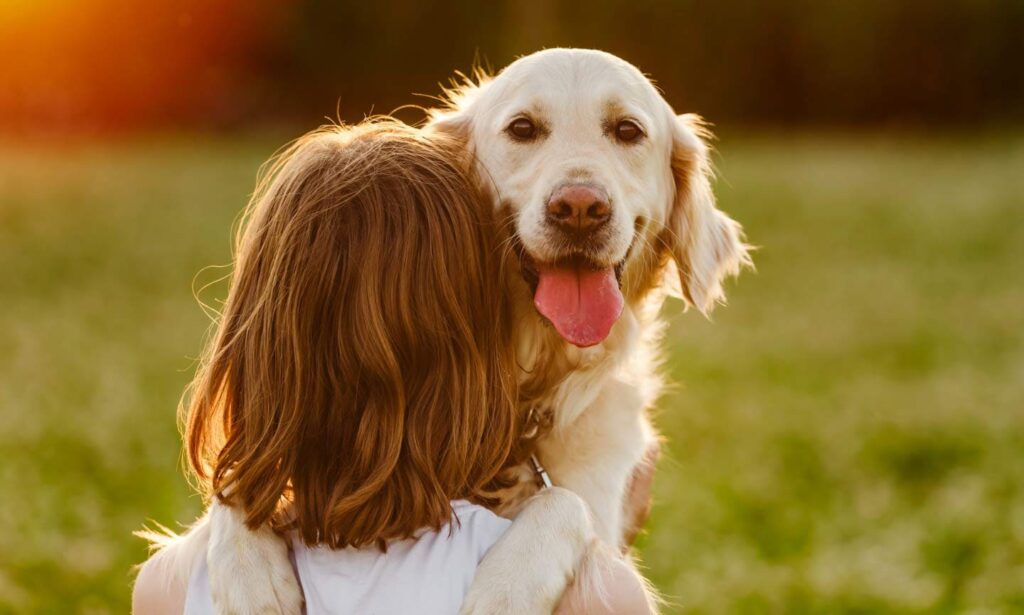How to Find a Lost Dog

Photo by iStock.com/LSOphoto
The sinking feeling of a missing dog is a heart-wrenching experience for any pet parent. If you’re in this position, it’s crucial to act swiftly, use your local resources, and follow expert advice on how to find them.
Here’s exactly what you need to do if your dog’s missing, based on tips from a certified dog trainer and veterinarian.
How To Find a Lost Dog
If you’re here because you’ve typed “I just lost my dog” in your search engine, we’re here to help you get your beloved pup back. Start with these essential steps.
1. Search Your Home
It’s often our first inclination to run outside looking for a lost pet, but many are actually hiding inside their home.
“If your pet gets spooked for a reason and you can’t find them, make sure to check all of their favorite hiding places in the home,” advises Carly Fox, DVM, a veterinarian at Schwarzman Animal Medical Center in New York City. Make sure to:
- Open closed doors to see if they accidentally locked themselves in a room
- Check closets and under beds
- Look around shrubbery and trees in your yard
2. Organize a Neighborhood Search
Along with surveying your yard, walk around the neighborhood. Along the way, let your neighbors know your dog has gone missing. Knock on doors and show them a picture of your pet so they can help keep an eye out.
“They also can check their security cameras to see if they saw your pet,” Dr. Fox says, “or which direction it may have gone when it left your home or yard.”
3. Call Local Organizations
If you’ve determined your pet isn’t at home or around the neighborhood, reach out to local pet organizations, such as humane societies, rescue centers, adoption shelters, animal care and control, and local animal hospitals.
“They typically have a large network to tap into in order to help broaden your search, as well as access to social media to help spread the word quickly,” Dr. Fox says. “Many of these organizations have lost-and-found boards that are constantly updating with new pets that might be in someone else’s care.”
Because staff at these organizations are animal lovers, they understand the stress of losing a pet—so you know they’ll take their search seriously. Plus, they can offer a sense of community and encouragement.
4. Check Your Microchip Account
If your pet is microchipped, check your account to make sure it’s active and all of your information is up to date. This is one of the most effective ways to reunite with your missing dog.
“Microchipping is an essential safety net, and its effectiveness relies on keeping your contact information current,” says Bradley Phifer, CBCC-KA, CPDT-KSA, CCPDT, executive director and owner of Bradley Phifer Dog Training in Fairland, Indiana. “Every time you move or change phone numbers, update your pet’s registration with your microchip company.”
5. Create and Distribute Lost Dog Flyers
If your pet is not found after an initial search, print out and distribute “lost pet” posters.
Dr. Fox says the poster should include a picture of your pet, either in color or describing their coloring, along with their basic demeanor and medical needs. This further spreads the word that your pet is missing and ensures more eyes are on the case.
6. Use Social Media and Community Networks
Similarly, spread the word about your lost dog by distributing information on social media, on message boards, and among your community networks.
Share all the information you’d include on a lost dog flyer, including a color picture, description of their personality, and any medical issues. Also include the nearest cross streets where your dog was last seen.
7. Set Up a Scent Trail
Dogs have an incredibly keen sense of smell, and in many cases they can make their way back home based on scent alone. To help them along, you can set up a scent trail.
Place worn clothing, their bed, or favorite toys in a central location near where they were last seen. You can also drag a scent item along the ground leading back to that spot.
8. Set a Humane Trap
A humane trap can help in situations where your missing dog is scared, injured, or generally wary of humans.
To set a humane trap, use a dog-safe trap sized appropriately for your pet in a quiet area near your home. Many home improvement stores sell humane dog traps; you can also ask your local shelter or rescue for leads on humane traps in your area.
Place familiar items like a favorite blanket or clothing that smells like you inside the trap, along with strong-smelling food and/or their favorite treats. Make sure to check in frequently, but avoid crowding the space since this might deter them.
What To Do If You Spot Your Missing Dog
When you finally spot your missing dog, you’ll likely be flooded with relief. Proceed with caution, though.
Do Not Chase Your Dog
When you come across your lost pet (or another’s), approach them slowly and try to avoid scaring them.
“Do not run after them or chase them, which can cause them to flee or worse, run into traffic,” says Dr. Fox.
Instead, let them approach you on their own terms. Lower yourself to the ground and turn away from them. Also avoid direct eye contact, which can seem threatening to dogs.
Do Not Call Your Dog’s Name
Shouting after your dog could frighten them. Instead, gently say it in a soft, upbeat tone while crouching or sitting down.
You can also use familiar cue words like “treat,” “walk,” or a nickname they respond well to. The goal is to sound inviting, not alarming.
Calm Techniques to Attract a Lost Dog
Along with moving slowly and speaking softly, try these expert-approved tricks for attracting your spotted lost dog:
- Crinkle a treat bag or open a favorite food container to spark recognition.
- Toss out treats, slowly reducing the distance until the treat is in your hand.
- Bring familiar-smelling items to encourage them to come to you.
- Use calming, repetitive phrases or familiar cue words in a gentle tone.
- Stay patient and still, since movement can scare a nervous dog; you may need to sit a while.
Lost Dog Safety Prevention
Experiencing the grief of a missing dog can shake you to your core. If you want to make sure that experience never happens again—or at all—follow these tips to help prevent lost dogs.
Escape-Proof Your Home and Yard
This may seem simple enough, but an open gate or a poorly latched door is often all it takes for some dogs to get loose.
“Homeowners should check their perimeter regularly to look for gaps, loose fencing, and even climbing hazards,” Phifer says.
Extend this protection by implementing safety protocols throughout your everyday habits. Phifer says getaways often happen during moments like loading the car, bringing in groceries, or letting guests inside.
“One of the best habits owners can build is calling their dog to them and putting them on leash before opening any exterior door,” he says. “Practicing this even during low-risk moments trains both the dog and the owner to think ahead.”
Teach Your Dog To Come When Called
Many people think of escape-proofing as an outdoor issue, but training starts inside. A well-trained and socialized dog is less likely to misbehave or escape, and they are more likely to come to you when called.
“A strong recall that cues your dog to come is one of the most important cues a dog can learn,” Phifer says. “It should be practiced regularly, and reinforced in a variety of environments and levels of distraction. It’s an important safety tool.”
Make Sure Your Pet Is Microchipped
Think of a microchip as an essential safety tool for your pup. These chips should be placed as soon as your dog joins your family, and the information should be updated every time you move or change phone numbers.
Phifer adds that you can also safeguard your pet with GPS collars and geolocators. “These are excellent tools that offer owners peace of mind, especially for dogs who hike off-leash, live in rural areas, or have a history of escaping,” he says.
Recommended Product
Keep Your Pet’s Tags Up to Date
Your dog’s ID tag should be visible and up to date, as it’s still one of the fastest ways for someone to return your lost dog.
“If your dog is found, someone can call you directly,” Phifer says. “Ensure tags are legible, securely attached, and updated if your number changes. I recommend including a backup number or including that the dog is microchipped.”
FAQs About How To Find a Lost Dog
Q: Do dogs know how to find their way home if lost?
A: Dogs have a very strong sense of smell that helps them navigate back to their homes. However, pet parents shouldn’t rely on this alone. It’s important to look around your neighborhood, alert organizations, spread the word on social media, and update your pet’s microchip should they get lost.
Q: How long does it usually take to find a lost dog?
A: This varies from case to case, but many reunite with their dog within a few days. It can sometimes take longer, so keep looking and spreading the word, and don’t give up hope.
Q: What are the chances of finding my lost dog?
A: Chances of reuniting with a lost dog are high, especially if you begin your search immediately. Chances of finding a lost dog are even higher when your pet is microchipped (and the information is up-to-date), their ID tag details are current, and you’ve been proactive about notifying neighbors, local pet organizations and shelters, and social groups.
Q: Where do dogs hide when lost?
A: Dogs can hide anywhere when missing, but they usually choose places that feel safe, secluded, and quiet. They may also be drawn to areas with food or water. Check with local organizations to see where missing pets often retreat in your area.




